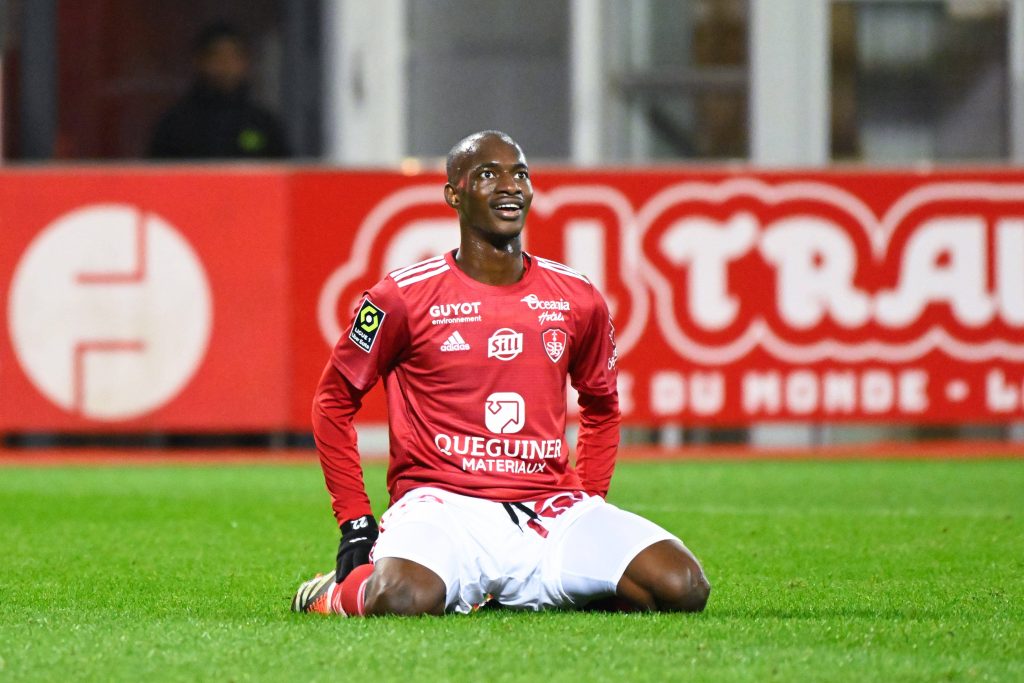Neel Shelat assesses how a small team from France is exemplifying the European trend of overachievement this season
2023/24 seems to be the season of the overachievers in Europe’s top five leagues. Teams such as Bayer Leverkusen, Girona, Bologna, and Aston Villa are the talk of town thanks in part to their eye-catching styles of play, but more importantly their very impressive league records.
Arguably one of the biggest overachievements, though, appears to be one that is barely being talked about. At the time of writing, Brest are all the way up in second place in Ligue 1 having finished just two places above the relegation zone last term – and they absolutely deserve to be there. By various Expected Points models, they have been among the top four teams in Ligue 1 this season.
So why are they not getting as much attention as the other overachievers? The answer appears to be quite simple. While Bayer Leverkusen and Girona have dazzled viewers with fantastic attacking play, Bologna’s unique build-up rotations have intrigued tacticians, and Aston Villa’s incredibly high defensive line has sparked a lot of discussion, Brest’s success has been built on very simple foundations. On the surface, their style of play is hardly anything new, but they are successful because they are executing it at such a high level.
That should also explain why not too many Brest players are having long scouting reports written about them. While the likes of Florian Wirtz, Victor Boniface, Artem Dovbyk, Joshua Zirkzee, and Ollie Watkins have stolen headlines for some of the aforementioned teams, Brest’s success has not been built on too many individual stars but rather by the well-refined collective implementation of a simple system.
A Clear Identity
The intrigue around Brest should start from their manager Éric Roy, who had not overseen a single match as a coach of any sort in over a decade prior to his appointment at Brest.
Born in 1967, his senior playing career spanned 16 years of which most were spent in France besides a couple of stints at Sunderland and Rayo Vallecano. He played his first and last senior matches for his hometown club Nice, who offered him a position in the marketing department soon after he retired.
After a few years in such roles, Roy worked his way to become Nice’s sporting director in 2009. A year later, he also assumed a coaching role after the departure of Didier Ollé-Nicolle. That did not go so well as he won barely over 30% of the matches he oversaw, so Roy stepped away from coaching after a year and a half and stuck to the business of sporting direction.
His time at the club would soon come to a messy end, as Nice sacked Roy in 2012 after reported disagreements with the management. The case ultimately went to the Nice Labour Court, whose decision made Roy €689,000 richer. He must have naturally been shaken by such a bitter end to his time at his hometown club, so he spent the next five years away from the world of club football as a consultant for the channel beIN Sports.
In 2017, Roy took charge as the sporting director of Lens, who have been consistently impressive in Ligue 1 of late. He left the role after a year and a half or so, and next crossed the English Channel to take charge as Watford’s sporting director in December 2019. At the end of the season, he stepped down from that position as well.
Naturally, then, it came as a pretty big shock to everyone when Éric Roy was announced as Brest’s new manager in January 2023. At the time, the Brittany-based club were in the relegation zone with just 13 points from 17 games and had sacked Michel Der Zakarian prior to the 2022 World Cup. Indeed, Roy himself later revealed that he started looking for other roles after not hearing back from Brest prior to the tournament.
Whether the Bretons saw something in him or simply took a chance after failing to secure their first-choice candidates we cannot tell, but Roy’s appointment proved to be an absolute masterstroke in hindsight. He quickly found a successful formula and steered them to a relatively comfortable 14th-place finish, conceding no more than a goal a game on average – quite a remarkable turnaround for a side that let in nearly two per 90 prior to his arrival.
This season has only been a case of building on those foundations for Brest. For someone with such diverse experiences, Roy has stuck to a very clear identity as far as his tactics and team selection are concerned. His Coach ID radar shows how consistent his team’s approach is regardless of the quality of the opponent they are up against, with only their defensive height and counterpressing noticeably changing.
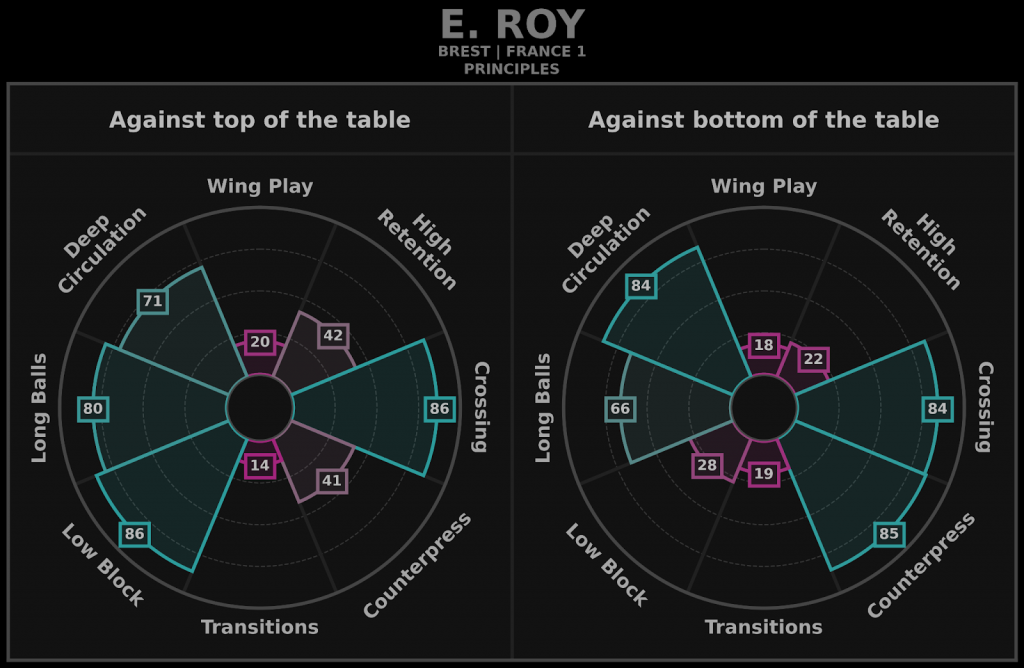
To illustrate the latter point, below is a chart of Brest’s squad sorted by appearances per position. Quite clearly, Roy has clear first-choice picks in every position bar striker, where two players have split their game time almost evenly.

(Image credit: WhoScored)
This stability in terms of selection surely helps the players perform better as they develop relationships with their teammates in consistent roles, but that is more relevant at a more evolved stage of Roy’s tactics. The basis of it all has been built on a solid defence.
Defensive Solidity and Measured Pressing
As we touched on above, the main factor behind Brest steering clear of the relegation battle in the latter half of the 2022/23 season was Roy coming in and solidifying the defence. To do so, his side mostly dropped into a low block without the ball, collapsing into a 4-5-1 shape. This meant that they had a lot of bodies behind the ball but would have to resist spells of pressure, which they did quite well to their credit.

For a side wanting to challenge towards the top of the table, though, this rarely is a sustainable manner to operate out of possession. So, in the new season, Brest came out with a totally different defensive approach. From the very beginning of the 2023/24 season, they have set up in high blocks and focused on keeping their opponents as far from their goal as possible.
Les Pirates do not have a specific defensive structure they strictly adhere too, but the broad framework of their high blocks stems from a 4-3-3 formation. The back four obviously stays pretty unchanged in terms of positioning, but there are a lot of match-to-match variations in the midfield makeup as player-orientation and often tight player-marking is prioritised in the region. Up front, the striker triggers and leads the press, while the wingers’ position is adjusted based on the opposition full-backs/wing-backs.

As this snapshot suggests, Brest’s high blocks are not overly aggressive in the sense that they do not commit too many players too far high up the pitch, erring instead on the side of caution. Add to that their resilience and solidity in a low block from their relegation-battling experience, and it is easy to see why they have the joint-best defensive record in Ligue 1 in terms of goals conceded and are third-best by xGA.
As a result of this approach, Les Pirates’ press is not an extremely intense one, but that is not to say it is not successful. Brest’s player-orientation through midfield tends to funnel opposition build-ups out wide, where their selective trigger-based pressing has been proven very fruitful indeed.
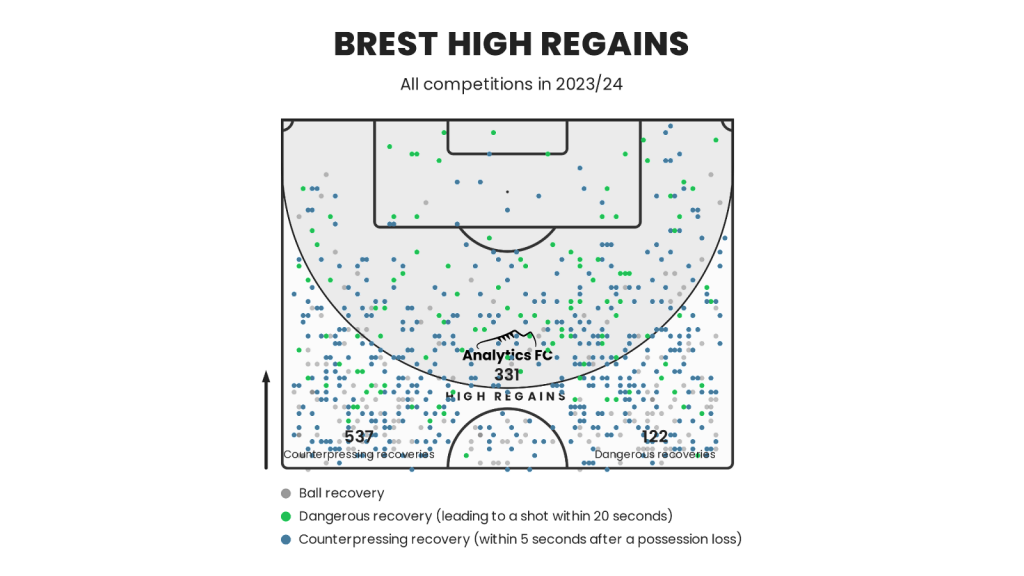

(Image credit: Opta Analyst)
Such pressing and high turnovers can lead to the generation of some attacking threat too, and at times, even goals.
TONNERRE DE BREST ????#SB29OM (1-0) I @SB29 pic.twitter.com/HrioQy2dOd
— Ligue 1 Uber Eats (@Ligue1UberEats) February 18, 2024
Direct Attacking
This brings us on to Brest’s attacking play, which is the slightly more mediocre aspect of their play. Their return of 36 goals in 26 games is only the sixth-best in Ligue 1, and their xG tally drops them to a mid-table eighth.
They are not a boring team to watch by any stretch of the imagination, though. Les Pirates can be quite free-flowing when they get going with the ball, especially when given a lot of space to work with. So, for one, they can be a counterattacking threat even out of a low block.
Le festival de Romain Del Castillo ?@SB29 I #SB29CF63 pic.twitter.com/Au2oZQ8x6h
— Ligue 1 Uber Eats (@Ligue1UberEats) December 5, 2023
La demi-volée parfaite ?#FCNSB29 I @SB29 pic.twitter.com/TypQ90VmFk
— Ligue 1 Uber Eats (@Ligue1UberEats) December 18, 2023
With settled possession, Brest set up in a sort of 2-3-2-3 shape with both full-backs very close to the touchline, Pierre Lees-Melou as the number six with Hugo Magnetti pushing up on the left and Mahdi Camara peeling off to the right, though the former often drops back to support Lees-Melou in helping progress the ball.
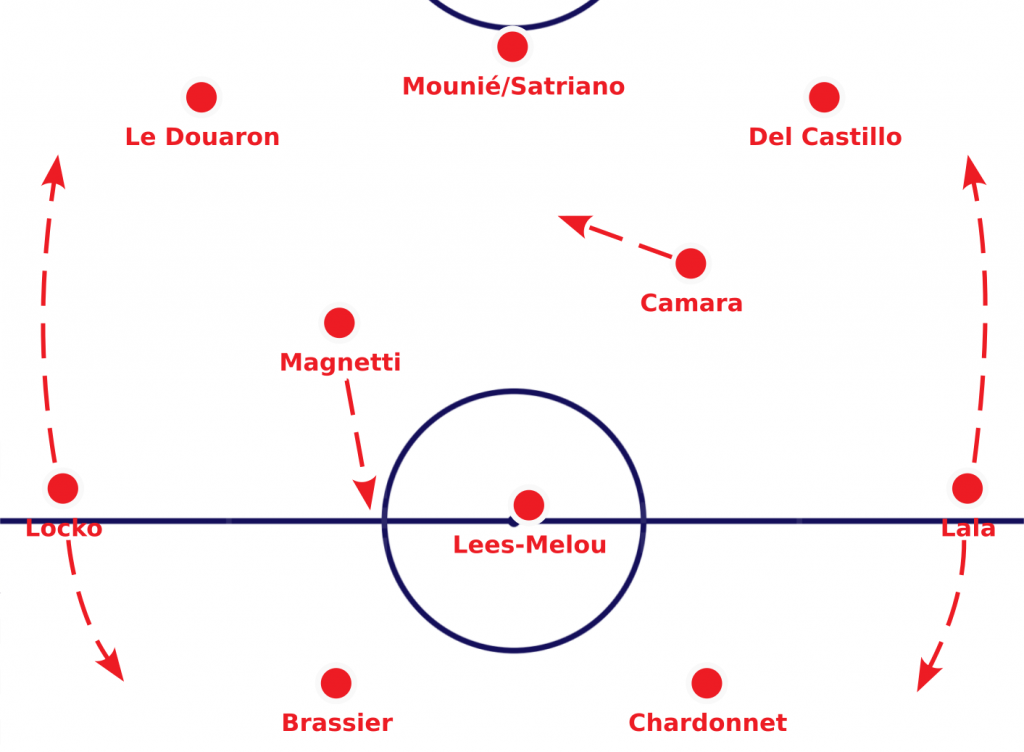
The two full-backs operate in the manner of a steering wheel – with one’s forward movement being balanced by the other dropping back. This interplay between them is critical in ensuring that Brest maintain a solid base while attacking and never get exposed on the counter themselves.
The Breton side’s build-up follows a very simple pattern – circulate short to draw the opposition out and then target the wings with long balls. This shows up in all sorts of data, including the fact that they have by far the highest average of long balls per 90 in Ligue 1…

(Image credit: FotMob)
…and their progressive pass map which is quite reminiscent of Andoni Iraola’s Rayo Vallecano in the near-total avoidance of Zone 14.

In Jérémy Le Douaron and Romain Del Castillo, Brest have two excellent ball-to-feet wingers who can take down such long balls, wriggle out of tight spaces and produce end product in the form of chances created or shots.
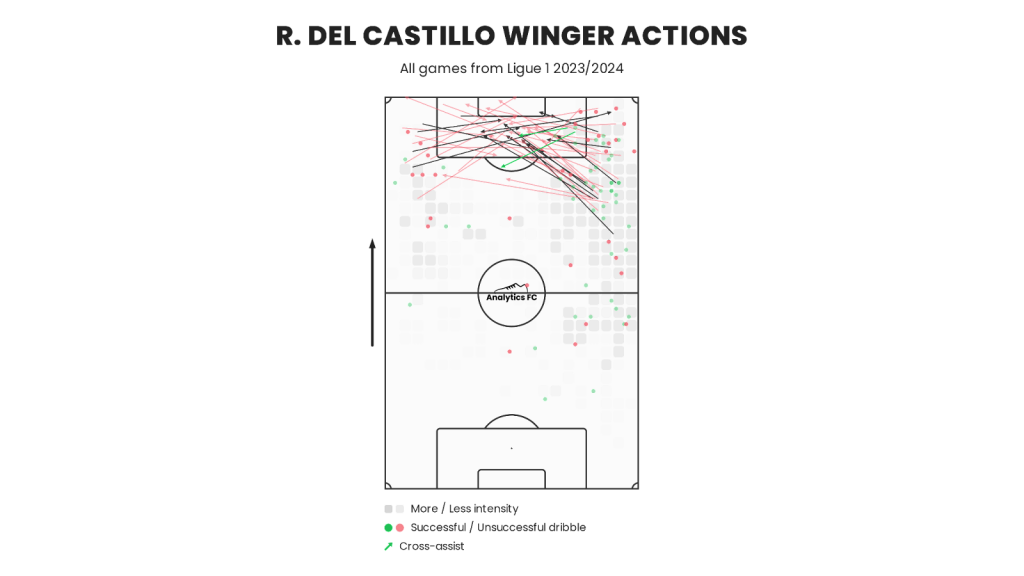
Add to that their hard-working overlapping full-backs Kenny Lala and Bradley Locko who can also whip in a decent cross, and it is easy to see why Brest’s chances are mostly created from the wings. As the below map suggests, a good portion of Brest’s creation also comes from corners and set-pieces – about 20% of their xG to be exact.
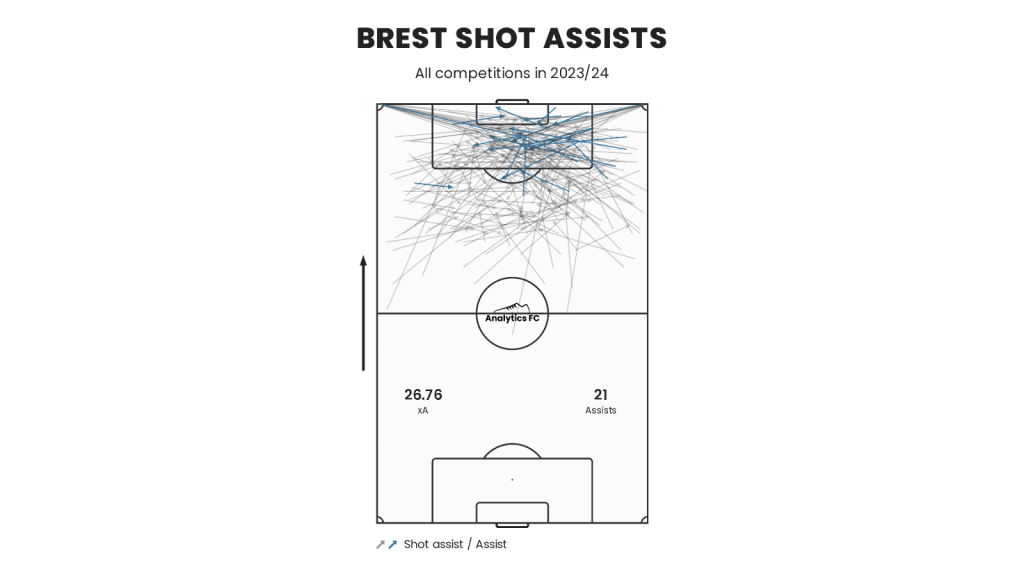
In such a cross-focused approach, the midfielders do not get to shine on the ball as much as they might like. The more advanced midfielders in particular get bypassed quite a bit, so their roles involve adding bodies in the danger areas while attacking and mopping up any loose balls that come their way, as counterpressing is an important aspect in such a long ball-based playing style. Behind them, Lees-Melou also has to cover a great deal of ground defensively to ensure that his defenders are not exposed in transition.
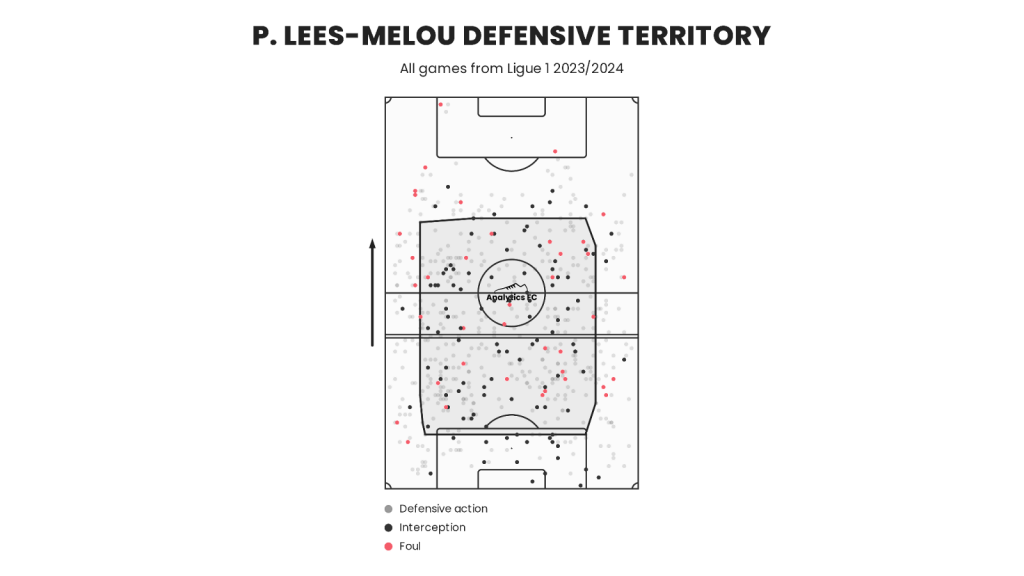
The former Nice midfielder is perhaps the most special player in this Brest side due to his incredibly well-rounded qualities. Besides being super solid defensively, he is a very smooth operator on the ball too with silky line-breaking carrying and dribbling as well as pinpoint passing. The 30-year-old Frenchman can regularly be seen running the show in Brest’s midfield.
????????????? ??
— Ligue 1 Uber Eats (@Ligue1UberEats) January 2, 2024
Pierre Lees-Melou rayonne dans le coeur du jeu du @SB29 ? pic.twitter.com/Y9oj01yraq
This sort of direct approach requires a lot of hard work and cohesive execution from all involved as well as a touch of individual quality to make the difference in the final third, but Brest have perhaps been left a little lacking in the latter regard. They are underperforming their xG as a whole…
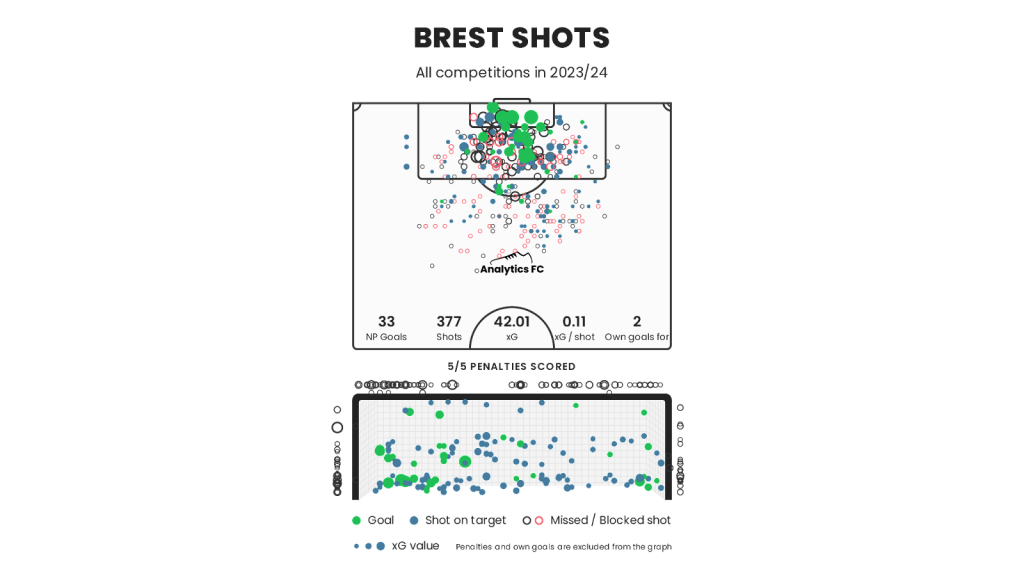
…but worse yet, their two strikers are the top two culprits in this respect.

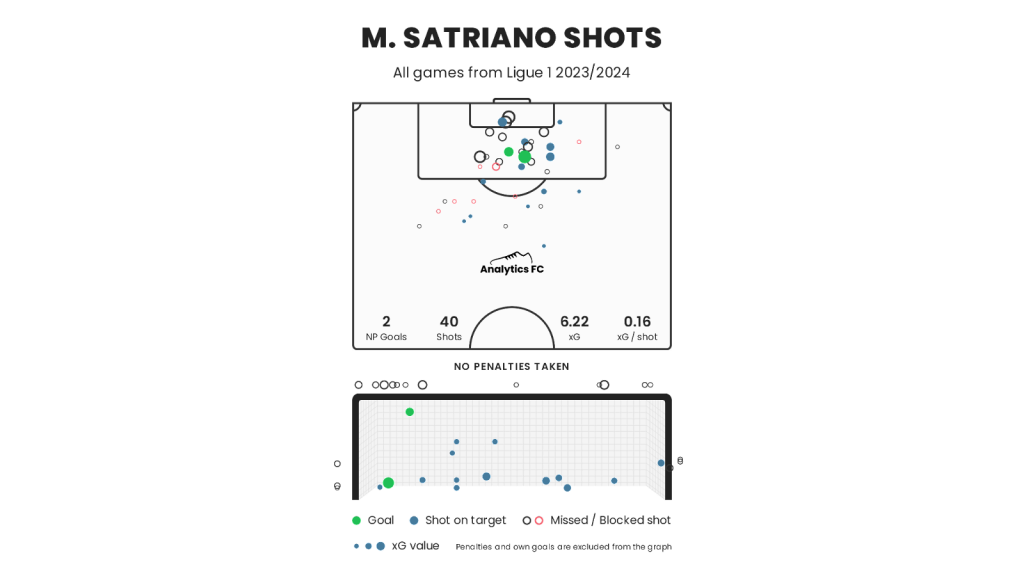
So, while Brest’s attacking play might not be the most sophisticated, they clearly have the potential to do better than what their current output suggests, and even that is not bad at all.
At the same time, they are also capable of the spectacular.
?????? ??????? : L'HOMME DU MULTIPLEX ?#SB29FCL (4-0) I @SB29 pic.twitter.com/8R3o2DvdRU
— Ligue 1 Uber Eats (@Ligue1UberEats) December 20, 2023
Why Brest’s Success May Be More Sustainable
Last season, we published a piece on Lorient, who were also using a direct style of play (albeit of a different flavour) to overachieve in Ligue 1. We did warn about their overperformance, though, and our fears turned out to be true as they dropped to the bottom half of the table come the end of the season and now find themselves in a relegation battle. A big reason behind that was their reliance on the individual quality of certain players (especially in attack) who were almost inevitably going to move on sooner rather than later. Once they left, Lorient obviously did not have the resources to find like-for-like replacements of equal quality, so their performances regressed.
By this logic, Brest’s success should be much more sustainable. As we have analysed, Les Pirates’ dizzyingly high position in the league is down to their simple yet effective style of play in which every player has a clearly defined role. Most of these roles do not require anything overly special, so even if some of their current starters leave, they should, in theory, be replaceable. Indeed, their players are less likely to be in demand as much as the likes of Enzo Le Fée and Dango Ouattara were, and the reason for that is the same.
With that being said, it is worth noting that Brest are not necessarily the second-best team in France either. Their underlying xGD numbers suggest they should be hovering around the fourth or fifth spot, which is still incredibly impressive for a side that has never finished in the top half of the French top-flight in over three decades. Surely then, they are in a great position to seal their European debut for next term.
The challenge for Brest, then, will be sustaining their success on multiple fronts going forward. This is where a little more squad depth and rotation could prove useful, though they will likely continue to prioritise the league. In any case, Eric Roy and his coaching staff have done an incredible job with a squad whose total market value is less than half of Kylian Mbappé’s reported annual salary at PSG!
Stats courtesy Transfermarkt, WhoScored and Opta via Fbref.
Header image copyright IMAHO/FedericoPestellini/Panoramic

